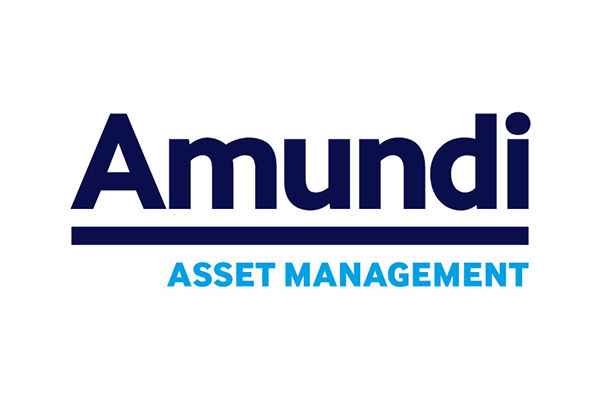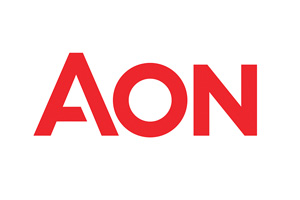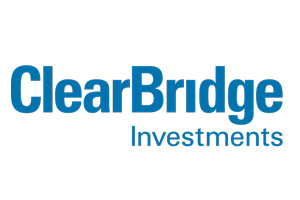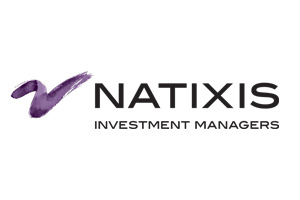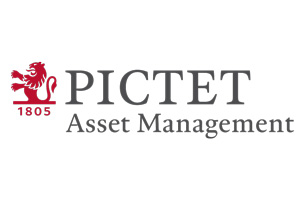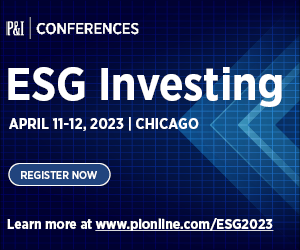P&I’S 2023 ESG INVESTING CONFERENCE SPONSORS
GAINING AN EDGE
The state of ESG investing today is one of constant evolution, with progress on several fronts and continued uptake by asset owners. Investors are pursuing environmental, social and governance strategies across asset classes that can deliver risk mitigation and alpha opportunities while also meeting their fiduciary obligations and monitoring regulatory developments. A closer focus on thematic approaches and engagement with issuers continues to drive investment solutions that address the world’s critical environmental and social issues.
“Asset owner curiosity about the relationship between risk and return ESG issues continues to grow year-on-year. Investment staff and trustees of retirement plans, endowments and foundations are increasingly curious [about] whether their asset managers have an information or timing edge in identifying, and potentially exploiting, under-appreciated ESG risks and opportunities, such as [with] climate change,” said Daniel Ingram, partner and head of responsible investment at Aon. “That curiosity is translating into more scrutiny in the number and scope of questions in asset owners’ requests for proposals, in investment and operational due diligence, and in using ESG evaluations to inform manager shortlists and selection,” he added.
While retail interest in principles-based investing initially drove ESG commitments, “it has moved increasingly toward institutional clients,” said Xavier Chollet, senior investment manager of the clean energy transition strategy at Pictet Asset Management. “ESG is not a ticking-the-box exercise. More and more institutions are looking at the entire ESG ecosystem with the aim of having an impact on climate change and the decarbonization of the economy. That’s valid for institutional plans, family offices and retail investors.”
Meeting different needs
The specific need of an institution’s investment portfolio often drives the ESG approach. “Some ESG strategies focus on financial factors as the primary objective. But not all do so, and that can be a pretty significant difference to consider, particularly for an ERISA-qualified plan fiduciary,” said Liana Magner, executive vice president and head of retirement and institutional at Natixis Investment Managers. Fiduciaries under the Employee Retirement Income Security Act are paying more attention to “important factors that impact financial performance and the ability of managers to incorporate ESG factors into their investment process to increase the risk and return profile, and benefit participants and plan sponsors,” she noted.
Read: Investing Today in the Sustainable Leaders of Tomorrow: The Potential for US ESG Improvers
Different types of asset owners pursue different ESG objectives. “By sub-asset owner types, public pension funds aim to understand how a manager incorporates ESG in its pursuit of risk reduction and return. For some pension funds, climate and climate transition is a key topic of motivation. Endowments and foundations are more deeply aligned [with] seeking impact, seeking additionality and outcomes, so they may have more intentionality from an impact perspective in their portfolio strategies,” said Annie Chor Joyce, head of ESG for Amundi US.
“Climate remains a top theme for many ESG investors, and that makes sense given the existential threat that climate change presents to the planet and financial assets. We are specifically focused on trying to do our part to help reduce greenhouse gas emissions and carbon output from our portfolio of companies,” said Derek Deutsch, managing director and portfolio manager at ClearBridge Investments. He added that other ESG themes represented in ClearBridge’s portfolios include resource conservation; human health and economic well-being; sustainable agriculture; and diversity, equity and inclusion.
Pursuing specific objectives
Today, as more investors recognize the power of investment capital to ameliorate critical environmental and social issues globally, asset managers are encouraging them to consider ESG’s long-term financial impact on organizations in concert with short-term performance prospects.

“The industry has become transfixed by data inadequacies and evolving regulatory standards, which are real challenges but should not prevent action,” said Pablo Berrutti, senior investment specialist at Stewart Investors. “To be effective and aligned with fiduciary responsibilities, the shift must start with investment beliefs. There is no way for investors to avoid the impacts of environmental and social issues on their investments, whether it is biodiversity loss, climate change or human rights. If we don’t deal with them as responsible stewards, they will have increasingly negative impacts that are already clearly visible.”
Read: Keeping up with climate change
Many investors today understand that “ESG, as we commonly refer to sustainable-investment strategies, is not an asset class, there isn’t one specific definition for it and that various approaches to ESG investing are available in the market today,” Magner pointed out. They could pursue positive or negative screening, based on specific ESG or value criteria, as well as ESG integration, where ESG factors are incorporated into the investment process to pursue alpha and manage risk. “Others may focus more on sustainability-themed approaches, where investment selection is guided by long-term environmental, demographic, social, sustainable-development or other trends, and impact investing that targets particular ESG objectives,” she said.
However, many asset owners still have work to do in adopting greater precision in how they define ESG objectives and implementation strategies. “There is still much confusion in this space. What continues to emerge is the need for clarity and transparency in how a manager views and utilizes the vast amount of ESG data, and the need to better categorize and define the different ESG fund strategies,” said Joyce. The way “we can move ahead in the market, from an ESG perspective, is to partner and work with our clients on the educational journey.”
“An entry point for asset owners may involve understanding the risk-return profile of the impact opportunity set and to ask themselves which asset classes supply the best impact ‘bang for their buck.’ They can implement by asset class or consider options alongside conventional strategies and invest [in ESG] where expected returns are commensurate,” said Aon’s Ingram. Additional approaches include a dedicated green bucket within existing asset class buckets, such as private markets and real assets; or setting a flexible target of total assets to impact goals, such as ‘emissions avoided,’” he added.
Fiduciary aspect is key
“From an ERISA fiduciary perspective, as long as you put financial risk and return first, as the primary objective, then regardless of political issues, fiduciaries should feel comfortable incorporating ESG into their retirement plan. We think that ESG integration, positive or best-in-class screening and sustainability-themed approaches are certainly eligible and will work well in the retirement plan space,” said Magner. The Department of Labor recently clarified its final rule relating to ESG considerations that could help plan sponsors move forward.

According to Deutsch at ClearBridge, “Asset owners should ensure they understand how investment managers incorporate ESG to enhance risk-adjusted returns and improve stakeholder impact. Considering these issues will give investors a sense of whether they are doing it in a way that enhances fiduciary duty.” Investors that do not realize their fiduciary alignment on both sides of the risk and alpha equation are missing the full picture of ESG investing. “The point of looking at relevant and material ESG factors is to try to understand what [ESG] risks a company might be exposed to and what opportunities [they address]. Investors that aren’t considering material ESG factors might not understand that it can be on the opportunity side as well,” he said.
Read: ESG in DC Plans: 3 Questions With Dan Pawlish
“For defined contribution plans who want to meet their fiduciary responsibilities while being responsive to plan participants asking for ESG funds, a variety of approaches are being implemented,” said Magner. “Some plans add a single asset class of an ESG-themed strategy to the fund menu to check that box [by] making an ESG-focused investment option available [to participants]. In contrast, others add a sampling of ESG funds, such as themed equity, fixed income, actively managed and passively managed,” she said. “For those participants who want that one-stop-shop managed portfolio, we have seen plans start to offer a choice of two different target-date series, active or passive [and] ESG-themed or not.”
“The last 12 to 18 months has been characterized by regulatory and media scrutiny and, in some markets, political discourse around the validity of ESG,” noted Berrutti at Stewart Investors. “In many respects, it has distracted from the work of investing, from understanding the quality and the sustainability positioning of companies and has instead focused on disclosures, labeling and taxonomies,” he said. While this discourse is part of a natural evolution for sustainable investment as it becomes more accountable, investors should stay focused on the relevant investment issues that underpin ESG, he added.
CLIMATE CHANGE REMAINS CENTER STAGE
Climate change and energy transition remain at the top of ESG themes for asset owners — and for regulators around the globe — but other environmental, social and DEI themes within regions and companies are also coming to the forefront. To meet these different ESG objectives, asset owners are more focused on due diligence processes, financial materiality of ESG factors and data advances that can help improve portfolio monitoring and risk management.
“Asset flows into ESG strategies have increased significantly in the last two to three years, and it is fair to say that this trend stabilized in 2022,” said Eric Borremans, head of ESG at Pictet Asset Management. In Europe, the Sustainable Finance Disclosure Regulation characterizes Article 8 “light green” funds as promoting environmental or social characteristics, and Article 9 “dark green” funds as focusing on economic activities that have a positive, or sustainable, impact on society or the environment. “Article 8 and Article 9 strategies have had four times the number of inflows as conventional strategies on the equity front,” Borremans noted. “On the fixed-income side, it has been more balanced, where light-green and dark-green funds collected as much as conventional strategies.”
Read: ClearBridge 2022 Stewardship Report
Climate change has been at the forefront of regulatory priorities across the globe in the last few years. “In Europe, the EU taxonomy and SFDR went into effect last January, focusing on corporate investor climate disclosure. We expect to see similarly focused regulations for both corporates and investors coming out of the [Securities and Exchange Commission] in the U.S. this year, and these regulations will hopefully provide the market with increased transparency around ESG-related investment products, as well as provide investors with improved corporate climate data,” said Deutsch at ClearBridge.
Increased capital is needed to meet the United Nations’ net-zero global gas emissions targets. According to McKinsey, for example, “total global spending by governments, businesses and individuals on energy and land-use systems will need to rise to around $3.5 trillion annually for the next 30 years to get to net-zero emissions by 2050,” said Ingram at Aon.
“Despite the challenge, according to BloombergNEF, green investment grew to $1 trillion in 2022, up 31% from the prior year; and three large infrastructure funds were raised, with commitments totaling $22 billion and a raise of over $7 billion for a climate fund for the first time. This included investment in projects such as renewables, charging infrastructure, hydrogen production, nuclear, recycling, carbon capture and end-user purchases of low-carbon energy technology, such as zero-emission vehicles,” Ingram added.
Thematic developments
A related environmental issue getting more attention now is biodiversity. “Coming off the UN Biodiversity Conference, COP15, it was like a Paris Agreement moment when a deal was signed last December by almost 200 countries with the objective to protect about 30% of the planet’s land and oceans by 2030,” said Deutsch. ClearBridge Investments is working toward finding direct investments that lead to that positive outcome, he added. “We are scrutinizing companies that are harming the environment and negatively impacting biodiversity when deciding which companies would be appropriate investments.”
Read: ClearBridge’s New Targets for Net Zero
Deforestation as a sustainable theme is also gaining traction. The clear-cutting of trees for farming, occurring at a rapid pace, continues to add to climate woes by removing forests that absorb and store large amounts of carbon emissions, explained Berrutti at Stewart Investors. “500 million people around the world are smallholder farmers. They’re at the front lines of deforestation and at the base of the supply chains of many of the companies we invest in, and they also face enormous development challenges. If we, and the companies we invest in, don’t understand and engage at the nexus of social and environmental issues, companies will risk disrupted supply for key commodities — and we won’t reduce emissions from deforestation,” he said.
Deciphering materiality
Asset owners aim to conduct thorough due diligence on how each asset manager determines the financial materiality of ESG factors and incorporates the data across ESG strategies.
“First and foremost, considering material and relevant ESG factors as we conduct fundamental research at the company level adds value to our investment approach and enables us to drive excess returns. Looking at ESG factors gives us a more holistic view of companies and enables us to make more informed decisions as fiduciaries on behalf of our clients,” Deutsch said.

Determining the materiality of ESG factors is a complicated process due to the lack of globally recognized standards, intangible issues and differing priorities for regulators in different regions.
For many investors, ESG implementation continues to be challenging in the face of a lack of global standards and the increased impact of intangibles on asset values, said Joyce at Amundi US. “The primary reason [that] it is difficult to justify the ROI of an ESG investment is the lack of globally accredited frameworks that go beyond your standard, traditional metrics of balance sheets and P&L statements,” she said.
Another concern is intangible assets, such as reputational risks. “In 1975, intangible assets were about 17% of some corporate valuations. By 2020, they were determined to be about 90% of long-term value creation,” Joyce noted. For example, she said, severe controversies around corporate reputation can impact a company’s governance and overall performance. “The market and regulators are trying to build more disclosure on what is regarded as more intangible in the market and to make these factors a bit more tangible from a quantitative perspective,” she said.
Product differentiation and operating realities can also impact materiality. “Understanding the product mix of a company, whether cash generation is green or brown, and understanding operational risks with an environmental or social lens, are absolutely fundamental,” said Borremans at Pictet Asset Management. “For example, identifying companies with warehouses and factories located in areas subject to flooding or other types of extreme weather events, such as droughts. We can’t definitely say who will be flooded and when, but climate models are sufficiently sophisticated to have a good understanding of who is most at risk, and that is a predictable surprise,” he explained.
The data aspect
Asset managers are adding to their ESG toolkit to help determine which ESG factors are material. “Much of the ESG toolkit now centers around big data. We’ve got some hard-to-time and hard-to-quantify ESG tail risks, from physical risks from climate change to human capital risks around employee sentiment. Investors may be looking outside of the standard toolkit, beyond headline ESG ratings, into more esoteric sources of ESG data,” said Ingram. He pointed to the use of artificial intelligence to scan quarterly investor calls for mentions of ESG, employee exit data from online sources like Glassdoor or even deploying investigative journalists into supplier factories and operations.
Read: Exploring outside the lines
There has been progress by organizations, such as development of sustainability data by the International Accounting Standards Board and development of minimum ESG-related disclosure standards for companies by the International Financial Reporting Standards Foundation, noted Berrutti of Stewart Investors. But investors still need to layer their evaluation of the materiality of ESG factors across regions and asset types.

“Data and disclosure standards will continue to improve, but this will not replace bottom-up investment analysis. What is material and relevant for a bank in the U.S. is different from what is relevant to a bank in India, and both are different from what is relevant for a mining company,” Berrutti said. “The worst thing an investor could do is think that once they have standardized disclosure, the ESG analysis problem is solved. Accounting scandals have not disappeared despite 600 years of ever-evolving accounting standards,” he pointed out.
“Individual data points can lead you to believe a company is a sustainability leader, but it is the quality of the management team, their stewardship mindset and long-termism that drive business decisions and capital allocation. Understanding these aspects requires a qualitative lens, repeated engagements and ongoing monitoring of management over time,” said Berrutti. “A qualitative approach also helps us assess whether a company’s products and services contribute positively to sustainable development and whether it can thrive in the transition to a sustainable economy.”
Proprietary approaches
Even as asset managers continue to invest in proprietary data frameworks that are more comprehensive and can meet evolving regulatory requirements, each one’s approach and experience in ESG strategies remains a critical differentiator.
“Data will not be perfect, but we are starting to see more standardization as regulators try to put some of that definition in place. As managers, we do our best to locate sources and resources for what is incomplete to obtain a holistic picture of a company,” said Joyce. Amundi US uses a proprietary score that is scalable across its six investment hubs. “Those data points sit right alongside the traditional investment factors, making it easier for our investment team to see that holistic picture.”
Data and ratings may be more valuable and useful for passive investments, pointed out Magner of Natixis Investment Managers. “The passive approach to ESG investing is what we would call best-in-class screenings. Passive products are rated within each industry towards companies with positive ESG factors, she said. As an active manager, Natixis uses ESG ratings as just one factor to consider in the investment process. “Our target-date suite, for example, actually incorporates both as a blended approach, which includes ESG-screened passive and actively managed investment options,” she said. The firm uses public ratings from firms such as Sustainalytics and MSCI, adds its own proprietary analytics on factors like carbon risk and then compares them on an ESG quality score, she added.
“While more standardization of data clearly will help, there is an essential part of ESG analysis that will be qualitative and based on the human judgment of the investor, which is how we think we can add value through our many years of experience as portfolio managers and analysts integrating ESG into our framework,” said Deutsch at ClearBridge. “We can sift through the noise and find the signals that will help us make more informed judgments.”
Ingram said that regulators, issuers and investors are carefully considering the costs and benefits of ESG reporting requirements as the industry may be entering a new phase in standard-setting and compliance. “There is real thought being given to the delicate balance between the need for standardization of ESG data disclosures and overly onerous reporting requirements, for example, on smaller companies. We need to think about how capital market participants and other stakeholders will use ESG disclosures so that it is not just reporting for the sake of it,” he said.
Multilayered aspects
“ESG ratings are a good starting point and are clearly better than having no information. ESG ratings are an attempt at quantifying a complex set of multidimensional issues. By using such ratings, investors implicitly accept that weaknesses in one area, such as high greenhouse gas emissions, can be compensated by strengths in a completely unrelated area, such as board diversity,” said Borremans. “However, companies are complex systems; the bottom line is that a complex system is as strong as its weakest link. The weakest links cannot be compensated by strong links,” and Pictet Asset Management’s approach is to “try, as much as we can, to stay away from this averaging effect.”
Read: Climate Report: The race to zero
Multiple data sources can help gather the best data for specific circumstances, Borremans added. “Different data providers have different strengths in their own areas, and no single provider is best across the spectrum of ESG data.
Certain producers are good at governance, other data providers at evaluating climate risks. Some providers are leading-edge in evaluating greenhouse gas emissions and others have a leading edge in evaluating ESG controversies,” he said. “We have a multiprovider approach and work with 10 different data providers [who are] the best of breed in their respective areas of expertise because we treat ESG data as professionally and rigorously as financial data.”
BUILDING ON ENGAGEMENT LEVERS
To achieve positive ESG outcomes, asset owners and asset managers continue to build direct engagement with issuers, with both financial objectives and impact outcomes in mind. It is a crucial part of their due diligence process across the asset classes and has grown in scope alongside investors’ need to stay ahead of ongoing regulatory developments, both local and global.
At Amundi US, “over the last year or so, understanding how to have a better framework around engagement and how we most effectively share what types of engagement activities and themes are most important has been even more on the forefront” in conversations with asset owners, said Joyce. As an active manager, the firm combines a bottom-up investment-research approach with extensive global ESG dedicated resources. “That helps drive deeper insight, where simply using that top-line ESG rating from a provider is just not enough. Digging deeper with companies and having those direct conversations with them is important to provide that extra insight when assessing the companies that ultimately may go into a portfolio,” she said.
A range of levers
“The effectiveness of engagement comes from understanding the different levers you have available,” Berrutti said. Stewart Investors approaches engagement in three layers: First is the bottom-up analysis, which identifies company-specific and context-specific issues; second is a strategic assessment of issues that can impact companies across the firm’s portfolio — for example, plastic waste; and third is collaborative engagement, where Stewart Investors gets support from other investors to pursue broader issues, such as conflict minerals.
“Proxy voting, within an overall engagement framework, is a visible and powerful tool for public equity investors to advocate for a sustainable-business impact,” said Deutsch. ClearBridge Investments is a top 20 shareholder in many of the companies that it invests in, which provides good access to management, he said. “We have alignment in our long-term investment horizon with how most corporations manage their business, and we can have a constructive dialog with company management to advocate for changes we think would be in shareholders’ best interest, including financial improvements and ESG issues we feel they are not adequately addressing.” The firm’s portfolio managers can vote their proxies in a way that aligns with their fiduciary duty, he added.
Active management has an edge in influencing issuers’ behavior toward ESG goals, noted Borremans. “By definition, active managers are much better equipped, and it is a bit of a game changer, when it comes to engagement and active ownership,” he said. It’s important for the active manager to have one voice on ESG engagements across its portfolio teams. At Pictet Asset Management, “engagements are conducted jointly by several teams on the equity and corporate-debt sides. By joining forces, we collectively have more credibility and leverage on the companies that we engage with, and we prevent any risk of sending conflicting messages to the companies. Engagement objectives are closely coordinated between investment teams so that we maximize our influence for the collective benefit of our respective investors,” he said.
According to Ingram at Aon, stewardship — which involves both proxy voting and company engagement or operational oversight — can be done very differently depending on where one sits on the investment chain and the degree of delegation. For example, with the help of consultants, asset owners are increasingly seeking to hold asset managers to account for the proxy voting activity that has been delegated to them. Asset owners need to look across their portfolio of managers and monitor how they are executing their voting policies, particularly on the same company, over time, he said. As part of this oversight, it’s not realistic to scrutinize every vote cast, so asset owners need better tools to conduct forensic analysis on asset managers to ensure they are voting in line with their policies and can monitor so-called “split votes,” Ingram added.
A nuanced picture
Alongside the scope of engagement, ESG integration is expanding across the asset spectrum, though more slowly in certain sectors and assets. It remains a challenge to execute ESG integration across a multi-asset portfolio.
Read: Understanding the DOL’s Final Rule on ESG Investing in Retirement Plans
“Most U.S. companies are still in the early stages of incorporating ESG best practices into the management process and discipline, which means that there’s less disclosed information about potential material ESG considerations,” said Joyce at Amundi US. Companies “can keep potentially improving, from a valuation perspective, through cost reduction, energy consumption and reducing water intake,” she noted, adding that regulatory initiatives such as the Inflation Reduction Act, which provided additional subsidies, are a catalyst. An alpha strategy needs to closely monitor both company progress and regulatory shifts, she said.

Looking at Europe’s SFDR Article 8 light-green funds versus Article 9 dark-green funds, “it is possible to build a generalist, ESG light-green multi-asset strategy. But it’s not very straightforward to construct a dark-green multi-asset strategy because the usual building blocks are not all available,” Borremans said. “What asset allocators are missing in order to do proper multi-asset allocation is ultimately ESG coverage across the asset classes. Real estate and private equity are catching up fast, but hedge funds and total-return strategies are still struggling to become dark green,” he noted.
Another challenge for investors is to decipher the numerous ESG labels used by different asset managers. For instance, “as a listed equities investor, Stewart Investors calls itself a ‘sustainable development-focused’ asset manager and not an ‘impact’ investor,” said Berrutti, as the former more accurately reflects its approach. For instance, “impact investors might have one or two metrics for a company where they are looking to drive a particular outcome, whereas we take a broader view of how companies contribute to sustainable-development objectives and recognize not all things that matter can be measured. This holistic approach is distinct from what people commonly think about in terms of impact investing.”
Investors also continue to be wary of asset managers’ ESG-related representations that are not backed by evidence. “The world has become attuned to the issue of greenwashing, which is an overstatement of a company’s sustainability contributions. Then there is green-wishing, where people want to make a difference but overstate their ability to create the impact that they would like to achieve,” said Berrutti. “Both are problematic for different reasons, [and] investors need to be wary of the trap of overstatement as well.”
Regulatory moves
In the U.S., legislators and regulators are focused on more reporting by issuers and more fiduciary alignment by asset owners.
“The Inflation Reduction Act, passed last August, is the most significant climate legislation in the country’s history. It’s going to have ramifications for companies across several sectors, with most of the act focused on tax credits for energy and climate, the largest portion on clean energy-production investment,” said Deutsch at ClearBridge. “This is all taking place as companies and investors continue to set net-zero targets, which is becoming more and more common,” he noted. ClearBridge Investments is a signatory to the Net Zero Asset Managers initiative alongside 300 asset managers with a combined $60-plus trillion in assets under management.
The U.S. will continue to see knock-on effects from Europe, which is ahead of it from the regulatory-requirement perspective, said Joyce at Amundi US. For instance, the International Sustainability Standards Board aims to require climate-related scenario analysis where companies identify climate-related risks and opportunities in their disclosures. “There’s a clear area of debate between the SEC and overseas [agencies] around the ISSB’s requirement for Scope 3 emissions,” she said. In addition, she pointed to the EU’s Corporate Sustainability Reporting Directive, which is expected to “impact not only European companies but any global company, even those domiciled in the U.S., if they have a large enough subsidiary arm based in Europe. It is expected to impact nearly 50,000 entities, four times more than those reporting under the current EU requirements.”
DC plans get clarity
“In the DC plan space, the recent Department of Labor final rule has provided clarity on ESG investments that has moved the needle forward for sponsors in their role as ERISA plan fiduciaries,” said Magner at Natixis. “The rule has three basic tenants. The first one states that when selecting an investment, fiduciaries must engage in robust risk and return analyses that may consider ESG factors. The second point is that since the objective is to promote retirement savings, fiduciaries should manage these programs to benefit plan participants and not subject them to any objectives unrelated to retirement income. The third is that plan assets must be managed prudently and loyally,” she explained.
Read: Biodiversity: why investors should care
Importantly, “the rule didn’t provide a definition of ESG. It is not just about ESG investing but applies to all investments. The rule added a provision whereby plan sponsors can consider participants’ preferences without violating the duty of loyalty,” Magner explained. When making investment menu decisions, plan sponsors can accommodate participants who say they want investment options to align with their values or sustainability-themed investments.

“This is an important consideration since, according to findings from the Natixis Center for Investor Insight, 61% of workers said they would be more likely to contribute or increase contributions to their workplace retirement savings plan if they knew their investments were doing social good,” Magner said. “If plans find that adding an ESG investment option will help participants save more and be in a better place for retirement, they will consider that for an investment lineup.”
Forward momentum
“Several themes provide insight into the evolution of ESG investments. While there was early hesitancy from plan fiduciaries to be early [ESG] adopters, the DOL final rule has said that it is not just about ESG, but that sponsors can take participant preferences into account when determining what investment options to offer in the retirement plan,” Magner said. “It will be interesting to see how quickly ESG strategies pick up in retirement plans since the DOL Final Rule went into effect. We have seen that the U.S. views and regulations on ESG have lagged that of Europe and, as an industry, we [expect that we] shouldn’t go backward from here; we can only go forward,” she said.
The transfer of wealth to younger generations is an impetus for all retirement plans to increase their ESG focus. “The millennial generation, in particular, is much more focused on how their dollars are invested and the impact [they’re] having on the globe, much more so than prior generations. We see wealth transfer from boomers to millennials, which will continue to accelerate,” said Deutsch at ClearBridge. “The amount of attention being brought to bear on how investments are being made and what issues are being considered will evolve in the direction of more, not less.”
Recent unprecedented events like the COVID-19 pandemic, massive workforce volatility and geopolitical conflicts have forced companies to adapt to a global health crisis, engage in a battle to attract talent and absorb global supply-chain shocks, said Joyce. “Given [these] macro impacts, clients are demanding a hard look at how companies treat their employees, the communities they impact and their impact on the broader environment.” Moreover, emerging risks continue to interrupt business as usual, such as extreme and frequent climate disruptions that directly affect how companies manage their businesses. For active, bottom-up investors, that means an ongoing, hard look at ESG issues, she said.
Read: Scoping it out: understanding emissions data for climate risk management
Government support for an acceleration of the energy transition is also key to meeting global climate targets, said Chollet at Pictet Asset Management. “We have the technology and innovation to make those environmental technologies cost competitive, and that leads to a push from the politicians to accelerate energy transition,” he said. The Inflation Reduction Act in the U.S. will encourage investments in solar, wind, energy storage, hydrogen, electric vehicles and heat pumps, while in Europe the REPowerEU Act will help accelerate similar energy-efficiency investments. “Not only do we see an increased amount of awareness from the public and the politicians, but investors are becoming more aware that they need to shift their actions” to support the energy transition, he said.
As the gatekeepers to asset owners, investment consultants have an essential role to help educate them on the ESG investment case by providing balanced research and tools, Aon’s Ingram said. A good consultant can help a client navigate through some of the gray and squishy areas of ESG and ideally help accelerate the development cycle from education through to implementation, he added.
Ultimately, the sentiment and practice of asset owners and asset managers has increasingly aligned on ESG. Berrutti shared the integrated view: At Stewart Investors, “we look at companies and understand the quality of the business, the management and, obviously, the financials. An objective, qualitative analysis on sustainability and ESG also helps us understand the company’s long-term resilience. We believe that a bottom-up, long-term, active approach to investing in high-quality companies that contribute positively to sustainable development will deliver attractive returns with lower risk for investors while at the same time making the world a better place.”
